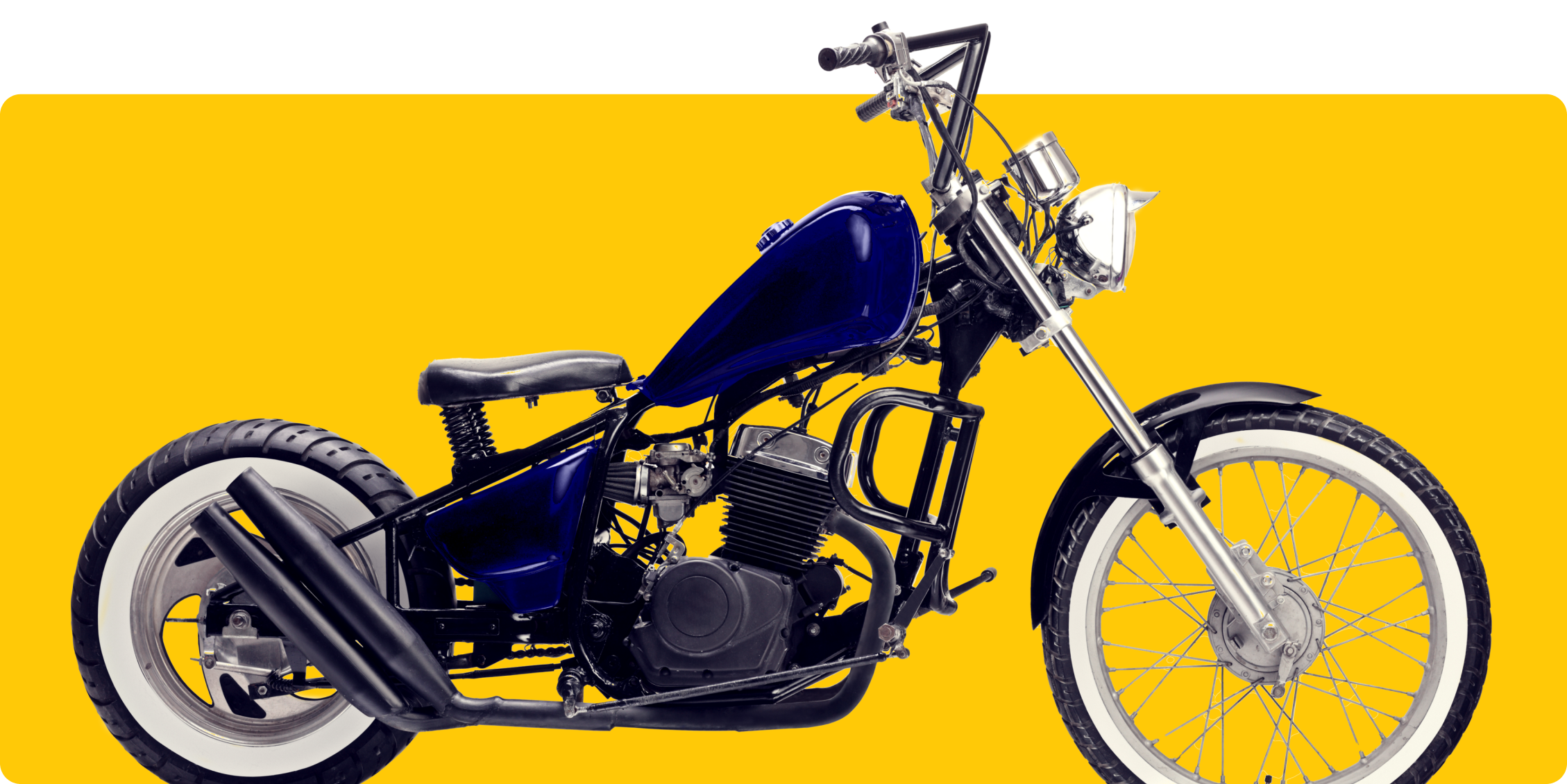Reliable, low cost motorbike delivery - from just £34

Reliable, low cost motorbike delivery - from just £34


No matter the make or condition of your motorbike, getting it collected and delivered is easy with AnyVan's motorcycle transport service.
Save up to 40% on your motorbike removals and rest assured we’ll match any better offer for the same service.
We only work with experienced two-wheel transport specialists, ensuring your ride arrives safely and securely.
With teams nationwide, we can transport your motorbike whenever and wherever you need.

With over 5,000 motorcycles moved each year, we know bikes like the back of our hands. From well-loved off-road bikes and solo scooters to gleaming heavyweight cruisers and full fleets for clubs and organisations, we handle it all. When it comes to transporting your bike, it’s a job for the pros.
That’s why we work with the best in the business, trusted by some of the biggest names in the auto industry, including Harley-Davidson, Triumph and Yamaha. Our expert motorbike movers come equipped with everything they need – ramps, straps, and the know-how to get your bike where it needs to be safely and securely. Even if your motorbike isn’t running, we’ll handle the whole job, so you don’t have to lift a finger.

We work with trusted motorbike transporters across the UK to offer competitive motorcycle transport quotes. Prices vary depending on factors like bike size – a Harley will usually cost more to move than a Vespa – and how far you're going.
Tempted to ride it yourself to save money? Consider the risks – long-distance travel means wear and tear, additional fuel and mileage, and the chance of on-road damage. Let the pros handle it for an excellent service with a low-cost motorbike delivery service, so you can save your miles for the rides that really matter.

Our expert motorbike movers are here to help. Better yet, booking your motorcycle transport service is so simple and fast that you can do it with your visor down!
Just tell us what motorbike (or parts!) you're moving, when, and where – and we’ll have your price in no time.
Book your motorbike transport when it suits you – and with next-day options, we’ll have you sorted in a flash.
We’ll match you with a trusted motorbike transporter and send you a tracking link, so you can follow the journey in real time.

Our motorbike delivery service has been road-tested by thousands of riders, but just to keep your mind at ease, we include a few safety measures on every move:
Plans change – we get it. You can edit or cancel your booking up to 2 days beforehand, free of charge.
We include £50k fire and theft cover as standard (see our T&Cs for more info).
Stay in the loop with live updates and real-time tracking on move day.

Whether you're securing a new ride, or selling yours, you'll want to keep the mileage down. From motorbike delivery across the UK to a long-haul trip through Europe, our motorbike transport teams will get your bike where it needs to go, without unnecessary wear and tear, so you don't need to worry about a change in value.
With experienced motorbike transport operators who treat every bike like their own, we’ll get your ride there safely – no wasted mileage, no exhausting trips, just effortless transport

Kera is one of our motorcycle transportation experts, here’s some of the questions she often gets asked:
